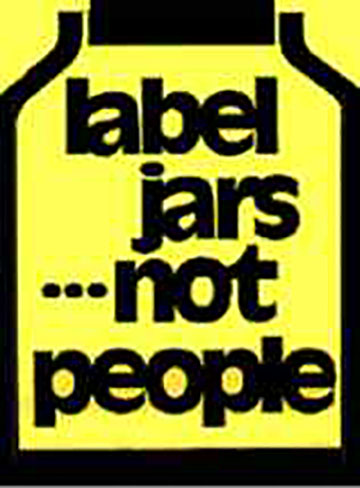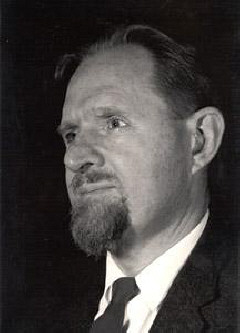"Nothing about me without me."
The Goals of Self-Advocacy
Inclusion International, a network of people with intellectual disabilities and their families, represents an international self-advocacy perspective..
The following core beliefs, values, and principles of self-advocacy, as defined by Inclusion International, represent a significant departure from the past and the views of parents and professionals, and a continuing evolution in disability rights:
BELIEFS AND VALUES OF SELF-ADVOCACY
Being a person first
Not defined by our disability or thought of as an eternal child. We are individuals with our own identity.
Making our own decisions
Not having doctors or parents deciding where and how we live. We must be listened to as we express ourselves, and we must be allowed to make our own mistakes. We must help those who have higher support needs and cannot speak for themselves, so their decisions can be understood and respected.
Believing in my value as a person
Understanding that I am a valuable citizen, worker, and friend. From birth, every human has the same worth. We must be supported to like ourselves.
Having other people believe in you as a person
Not accepting old stereotypes of persons with disabilities as somehow less than human. All people have the right to be valued as an equal in their own community. We must not be discriminated against because of our disability. Other people must learn that we are people and treat us in the same way as everyone else.
PRINCIPLES OF SELF-ADVOCACY
Empowerment
Support must empower individuals to make their own decisions. Regardless of the degree of disability, we must have support to make our decisions. We must be allowed to take risks. It must be up to us to ask for help from those we trust.
Equal opportunity
All people must have equal opportunity to be supported as full members of their communities, without regard to race, culture, or sexual choice.
Learning and living together
Keeping people apart from their communities is not acceptable. We have the right to participate in the community, attend our public schools, and grow up with other children. We must have the opportunity to do the same things as everyone else and to share the joys of daily living.
Institutions are bad for people
Being in an institution is not a human way of life. Institutions remove all of the things worth living for – joy, happiness, love, tenderness, feelings, emotions – and make you give up on life itself. As self-advocates we must close down every institution and liberate our unfortunate brothers and sisters who are now wasting away.
Non-labeling
People have the right to be recognized as the person they are, and therefore must not be labeled. Labels devalue us and should not be used to identify us. A true understanding of who we are will include knowledge about disability.
These principles were prepared by the predecessor organization of Inclusion International and their Committee on Self-Advocacy. Committee members included Chairperson Barb Goode, self-advocacy leader and disability rights activist, Canada; Ake Johansson, Sweden; Susanne Kolkmann, Germany; Robert Martin, New Zealand; Carol Pein, Australia; Alex Righolt, Netherlands; and Jackie Downer, England.
REDEFINING THE PROBLEM
The self-advocacy movement has redefined the "disability problem" as being less about rehabilitation and more about equality. While society maintained the view that persons with developmental disabilities must change to fit within societal norms, self advocates countered and clearly stated that society must change its attitudes and practices, and accept individuals with disabilities for who they are.
Self-advocates have redefined the 'disability problem' by reclaiming the very language used to describe them. If disability is an important descriptor, it should be secondary to the person - as 'people with disabilities.' Better yet, ... People first becomes just people

Label Jars Not People
Irving Martin on the Goals of Self-Advocacy
Self-advocacy is fifty-fifty, it's self-responsibility, it gives you pride, and it gives you dignity in the community. You've got to have dignity in the community to be social … the most important thing is to be honest with yourself, but more important is to be honest with other people. And that the city, wherever you live, has an interest in you to the best of your ability, that's what it really means.
Jacobus tenBroek is one example of an individual who redefined "the disability problem." Born in Canada in 1911, he lost some of his sight at age seven, the result of an accident and, seven years later. lost his remaining sight. His mother then decided to move the family to California so Jacobus could attend a state school for the blind.
In 1934, tenBroek graduated with highest honors from the University of California with a degree in history. He then went on to earn a master's degree in political science and a Bachelor of Laws and Doctor of Juridical Science degree from the University of California Berkeley School of Law. He continued his studies and eventually earned a Brandeis Research Fellowship with Harvard University.
While tenBroek was at the University of California, he and Newel Perry, one of his teachers, organized the California Council of the Blind. The Council was directed by people who were blind and became the model for the National Federation of the Blind (NFB). In 1940, tenBroek founded the NFB and served as its first president. tenBroek was convinced that people who are blind could establish and direct their own organization, and he helped them focus on that fact. His conviction is reflected in the organization's name and the use of the word "of" rather than "for."
When tenBroek died in 1968 at the age of 56, he was recognized and respected as an international legal scholar, a leading national authority on constitutional law, and an authority on social welfare issues.
Like other civil rights movements, the self-advocacy movement – through many independent groups – has identified issues and developed strategies for creating change. The following is a sample of issues pursued by self-advocacy groups:
- closing institutions;
- creating legislation to prevent abuse in group homes and large public institutions;
- changing stereotypes of disability;
- changing the criminal justice system to protect people with disabilities;
- receiving real pay for underpaid employees;
- demanding "real" health care and "real" jobs;
- increasing membership in local civic groups;
- creating inclusive public schools.

Jacobus tenBroek
The Role of the Support Person
The success of self-advocacy groups, which were formed partially in response to professional and parental attitudes, is largely contingent upon the support of advisors without disabilities.
All people need support, advice, and encouragement in their daily lives. The type of support and assistance needed depends on the individual, and his or her personal desires and circumstances. Self-advocacy groups recognize this need, and have described the role of the support person as that of advisor, facilitator, and friend. The relationship is one of mutual trust, understanding, and respect. The key to being an effective support person is to support, not control.
As the self-advocacy movement grows, the role of the advisor may shift more to persons with disabilities. Bernard Carabello, a national leader in the movement, has asked "How long do I have to be a self-advocate before I can become an advocate?" A few self-advocates, including Mr. Carabello, have taken positions as paid advocates and consultants.
